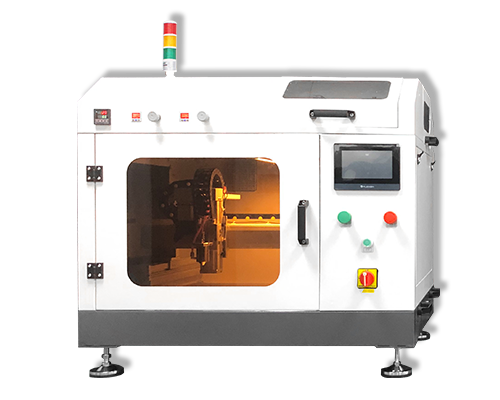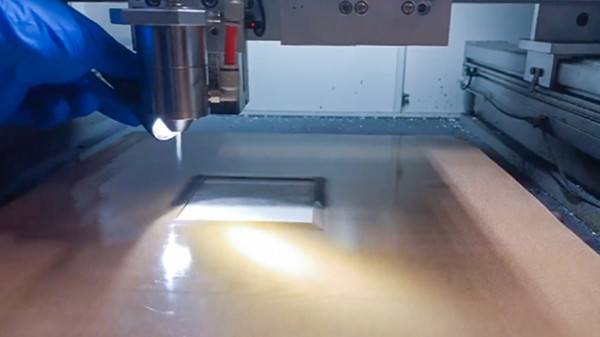PEM Water Electrolysis Hydrogen Production Electrolyzer Coatings
Ultrasonic spraying machine sprays proton exchange membrane water electrolysis hydrogen production electrolyzer
With the increasing global demand for clean and renewable energy, hydrogen energy, as an efficient and environmentally friendly form of energy, has received widespread attention. Proton exchange membrane (PEM) water electrolysis hydrogen production technology, as a mainstream hydrogen production method, has the advantages of high efficiency, environmental protection, and flexibility. As an advanced spraying method, ultrasonic spraying machine has been widely used in the preparation of PEM water electrolysis hydrogen production electrolyzer in recent years.
Introduction to PEM water electrolysis hydrogen production technology
PEM water electrolysis hydrogen production technology uses a polymer membrane with proton conductivity as an electrolyte, without alkali solution, and the diaphragm of the electrolyzer is mainly composed of a proton exchange membrane. In the PEM water electrolyzer, water is decomposed into oxygen (O₂), electrons (e⁻) and protons (H⁺) at the anode, and oxygen is discharged from the anode. Electrons flow to the cathode through an external circuit, while protons flow to the cathode through a proton exchange membrane. On the cathode side, two protons and electrons recombine to produce hydrogen (H₂). PEM electrolyzers have the advantages of high current density, high hydrogen purity, and fast response speed, and are more suitable for combination with wind, solar, and storage technologies. However, since PEM electrolyzers need to operate in a strong acid and highly oxidizing working environment, PEM electrolyzers are more dependent on precious metal materials such as iridium, platinum, and titanium, resulting in a high cost of current PEM electrolyzer equipment.
Working principle and advantages of ultrasonic sprayers
Ultrasonic sprayers are a type of equipment that uses tiny droplets generated by ultrasonic vibrations for spraying. Its working principle is to atomize the paint through an ultrasonic nozzle to form tiny droplets, and then spray the droplets onto the substrate through high-pressure gas. Ultrasonic sprayers have the advantages of high spray uniformity, high coating thickness control accuracy, high solution conversion rate, material saving, environmental protection, and energy saving.
In the preparation of PEM water electrolysis hydrogen production electrolyzers, the application of ultrasonic sprayers is mainly reflected in the following aspects:
- Catalyst coating: In the process of PEM water electrolysis hydrogen production, catalysts play a vital role. The ultrasonic sprayer can evenly coat the catalyst on the electrode surface, improve the utilization and activity of the catalyst, and thus improve the efficiency of PEM water electrolysis hydrogen production.
- Proton exchange membrane spraying: The proton exchange membrane is the core component of PEM water electrolysis hydrogen production technology, and its performance directly affects the electrolysis efficiency. The ultrasonic sprayer can evenly spray the proton exchange membrane between the electrodes to ensure close contact between the proton exchange membrane and the electrodes and improve the electrolysis efficiency.
- Gas diffusion layer spraying: The gas diffusion layer is an important component of PEM water electrolysis hydrogen production technology, and its main function is to provide gas channels and electrode support. The ultrasonic sprayer can evenly spray the gas diffusion layer on the electrode surface to improve the stability and durability of the electrode.
Ultrasonic sprayers play an important role in the preparation of PEM water electrolysis hydrogen production electrolyzers. By optimizing the spraying parameters and process conditions, PEM electrolyzers with excellent performance can be prepared. In the future, with the continuous development and improvement of ultrasonic spraying technology, its application prospects in the field of PEM water electrolysis hydrogen production will be broader. At the same time, further research and optimization of ultrasonic spraying technology is also needed to improve its spraying efficiency and quality, so as to provide better support for the development of PEM water electrolysis hydrogen production technology.
About Cheersonic
Cheersonic is the leading developer and manufacturer of ultrasonic coating systems for applying precise, thin film coatings to protect, strengthen or smooth surfaces on parts and components for the microelectronics/electronics, alternative energy, medical and industrial markets, including specialized glass applications in construction and automotive.
Our coating solutions are environmentally-friendly, efficient and highly reliable, and enable dramatic reductions in overspray, savings in raw material, water and energy usage and provide improved process repeatability, transfer efficiency, high uniformity and reduced emissions.
Chinese Website: Cheersonic Provides Professional Coating Solutions



